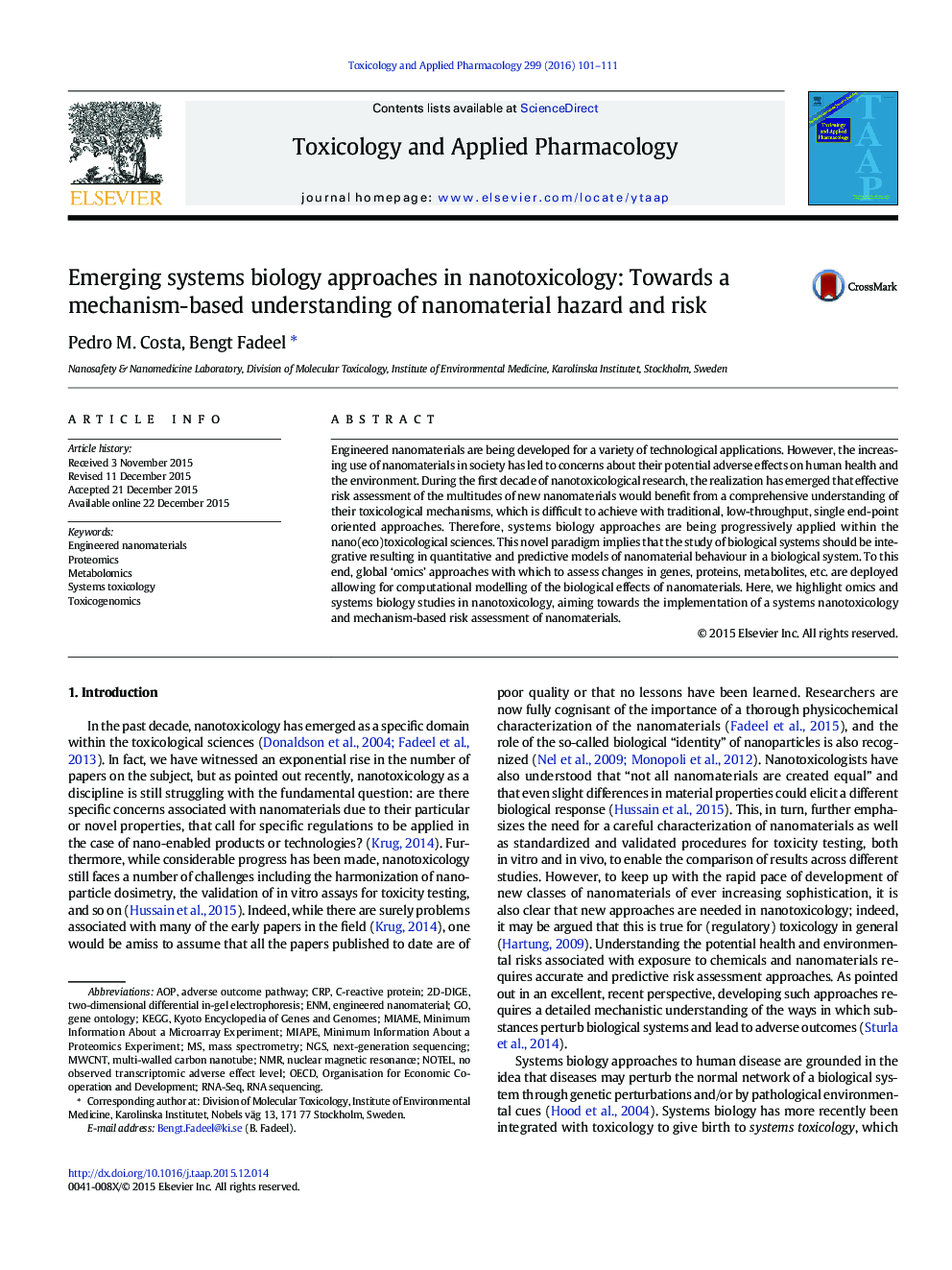| Article ID | Journal | Published Year | Pages | File Type |
|---|---|---|---|---|
| 2568124 | Toxicology and Applied Pharmacology | 2016 | 11 Pages |
•Systems nanotoxicology is a multi-disciplinary approach to quantitative modelling.•Transcriptomics, proteomics and metabolomics remain the most common methods.•Global “omics” techniques should be coupled to computational modelling approaches.•The discovery of nano-specific toxicity pathways and biomarkers is a prioritized goal.•Overall, experimental nanosafety research must endeavour reproducibility and relevance.
Engineered nanomaterials are being developed for a variety of technological applications. However, the increasing use of nanomaterials in society has led to concerns about their potential adverse effects on human health and the environment. During the first decade of nanotoxicological research, the realization has emerged that effective risk assessment of the multitudes of new nanomaterials would benefit from a comprehensive understanding of their toxicological mechanisms, which is difficult to achieve with traditional, low-throughput, single end-point oriented approaches. Therefore, systems biology approaches are being progressively applied within the nano(eco)toxicological sciences. This novel paradigm implies that the study of biological systems should be integrative resulting in quantitative and predictive models of nanomaterial behaviour in a biological system. To this end, global ‘omics’ approaches with which to assess changes in genes, proteins, metabolites, etc. are deployed allowing for computational modelling of the biological effects of nanomaterials. Here, we highlight omics and systems biology studies in nanotoxicology, aiming towards the implementation of a systems nanotoxicology and mechanism-based risk assessment of nanomaterials.
Graphical abstractFigure optionsDownload full-size imageDownload high-quality image (172 K)Download as PowerPoint slide
